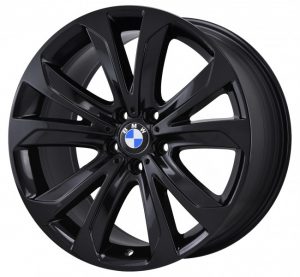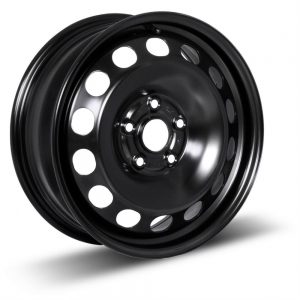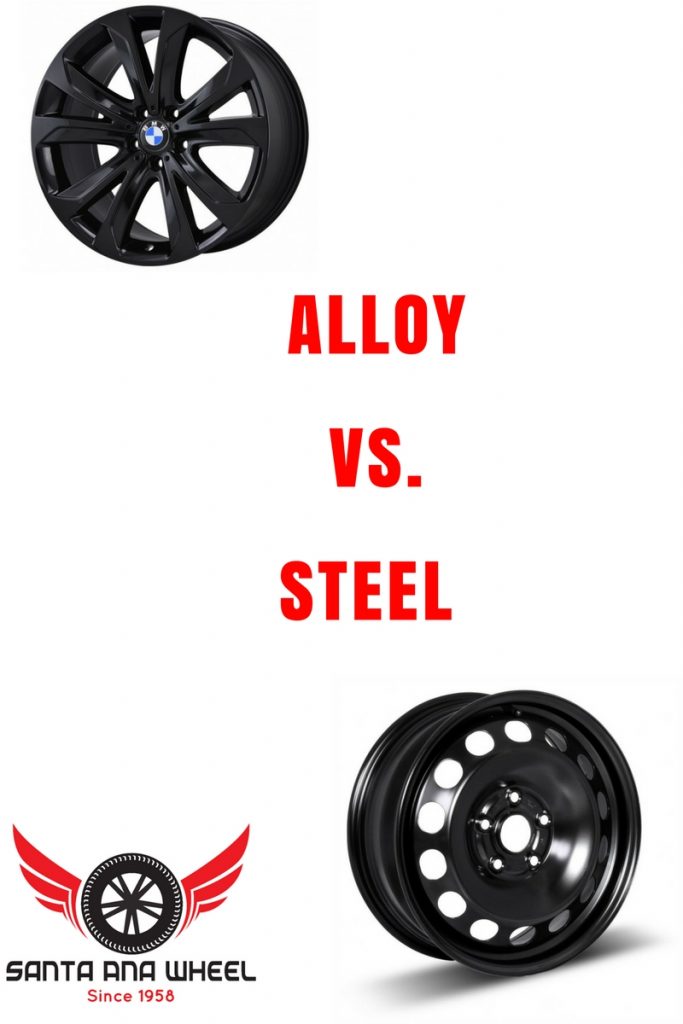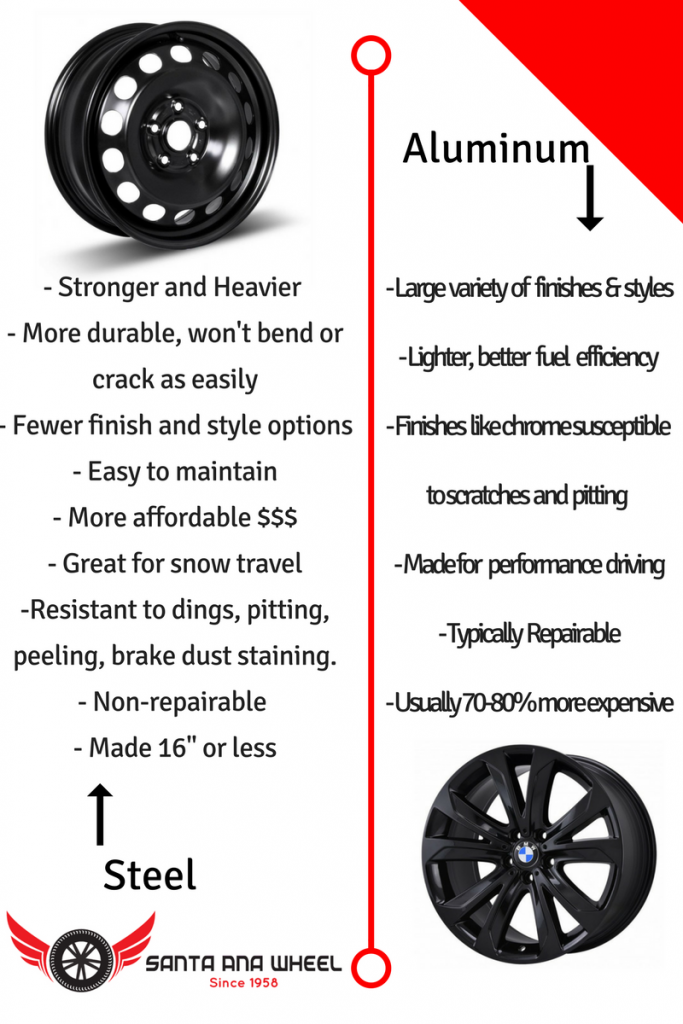Advantages and Disadvantages of Alloy and Steel Rims
There are two options for the material of rims, steel or aluminum, commonly called alloy in the automotive industry. These materials have different effects on driving, fuel efficiency, longevity, and cost. Typically base models only have steel wheels, unless the car is a luxury brand like Mercedes or BMW. For most drivers, wheels are split into two categories: Cost and cosmetic look, thats really what it comes down to. But let's go over all the advantages and disadvantages of alloy and steel, and you can decide for yourself.
Affordability
Steel wheels are usually $100 less than alloy counter parts, a much more affordable option for most folks, and they work just as well. The price will range depending on the finish and size, as some steels are made in chrome-clad, or "chrome skin" for a more polished look.
Durability
Wheels can be a big investment on a car, a whole set can cost from $400- $1200! So the durability and life of a wheel matters to the average driver. Steel wheels definitely win this round on durability, the strength of steel can withstand a lot more pot holes and bumps on the road than aluminum can. On the flip side, if an alloy wheel hits a pothole going fast enough and does get bent, most likely that wheel can be bent back to being straight. This is because of how strong steel is and how much more "soft" aluminum is, it can be molded back to being straight and true.
Once a steel wheel is bent, it's pretty much done and needs to be replaced. Relating to durability is the maintenance of steel and alloy, the finishes on steel are much more resistant to things like corrosion, peeling, etc.
Cosmetic
The biggest difference between steel and alloy are how they look, generally, a steelie is black or painted silver, and very basic looking. Not too many style options, and only one finish. Wheel covers have been made to cover the steel part and appear to mimic an alloy, but they can be cheap looking and very flimsy, you've probably seen them on the side of the freeway from falling off wheels.
Alloy can have a wide variety of styles, from size to spokes, to finish. Here is a typical black steel wheel, in rather new looking condition, while next to it is a nice black painted 5 double spoke BMW one.


Fuel efficiency, or gas mileage.
Surprisingly, the weight of the wheels on your car can have a direct effect on your gas mileage! The weight of the tires, brakes, and wheels are called unsprung weight because it is not being cushioned by the suspension. This unsprung weight affects how hard the car has to work in braking and accelerating, thus having an effect on the gas used.
Driving performance has a lot to do with the weight, so of course, alloys are favored by gear heads who love to go fast! But to save alloys during the winter snow, steel wheels are put on performance cars to grip the snow harder and give the car a larger center of gravity.




